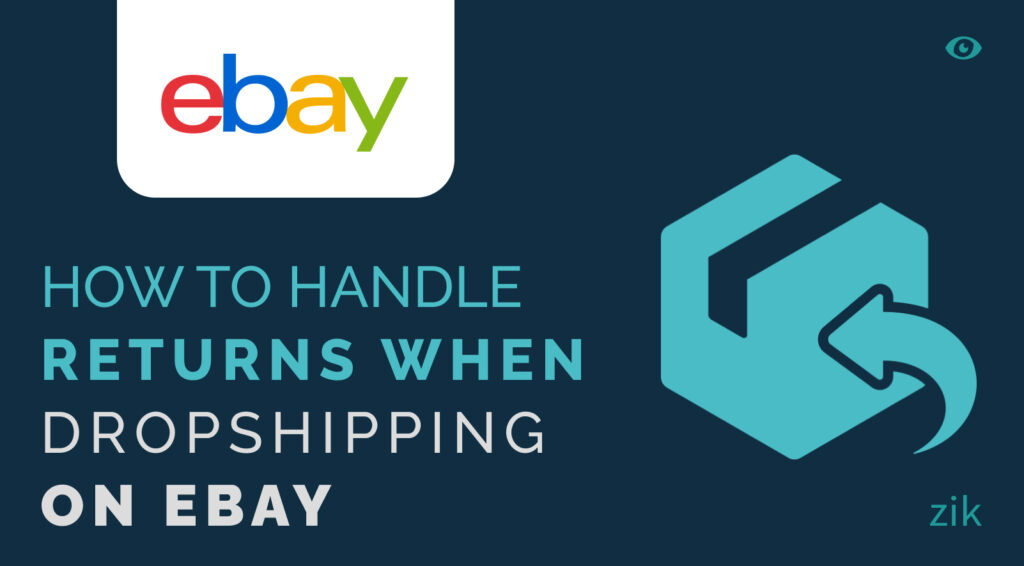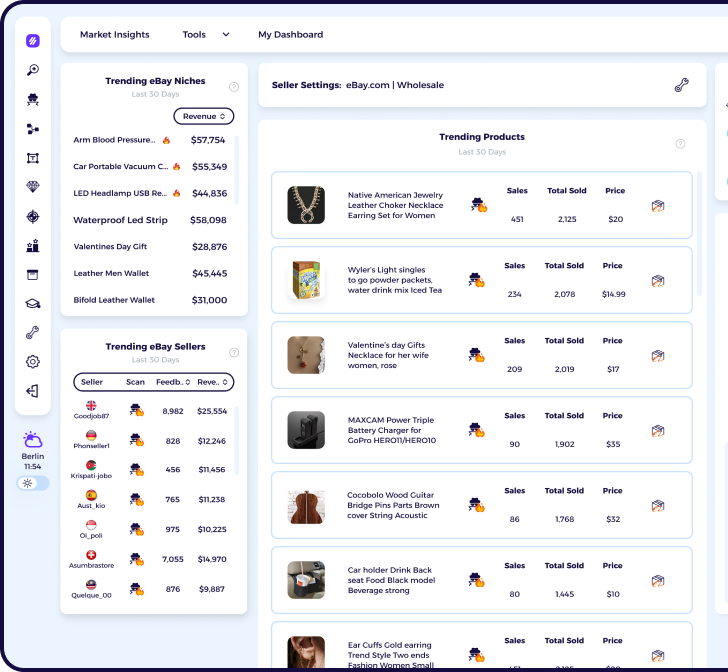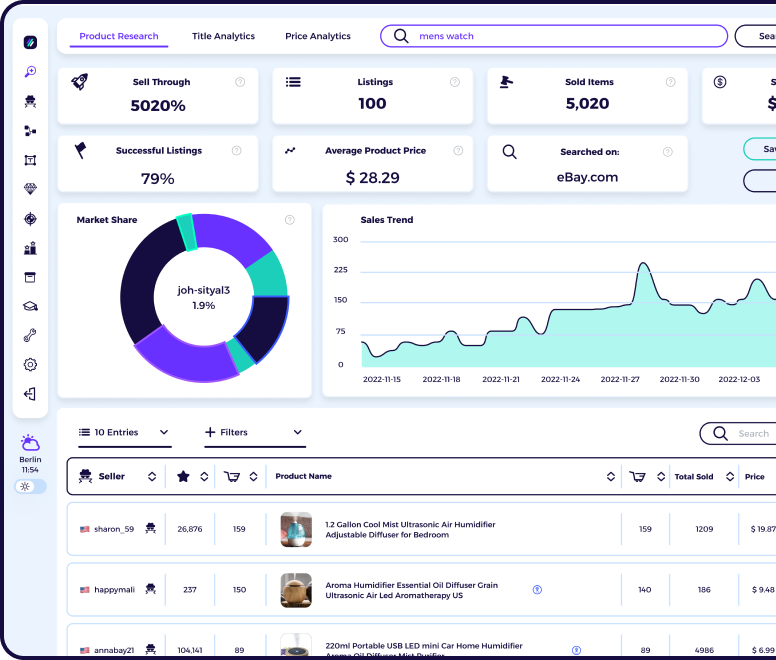When you start your eBay dropshipping business, you envision it as smooth sailing. You receive orders, and your dropshipping suppliers ship those products to your customers, leaving them happy with their purchases. Everybody wins.
But here’s a fact: returns are inevitable! It’s part of the reality of running an e-commerce business. You’ll likely experience returns and refunds throughout your business, so it’s best to prepare for them, so you know how to navigate the situation.
<
Article Overview
Why Would Customers Request a Return
How to Handle Returns for Dropshipping
Step 1: The customer initiates a return request.
Step 2: Check the return request.
Step 3: Have the customer send the product to the return address.
Step 4: Determine between a replacement or a refund.
Best Practices for Handling Returns with Your Dropshipping Business
What do you do when you receive that dreaded email from your customer?
When an order fails to meet the customer’s expectations, or it was fulfilled erroneously by your part dropshipping vendor or suppliers, customers will likely request a return – or refund.
Make sure you know how to handle returns when dropshipping. This guide will discuss everything you need to know about turning this nightmarish experience into something positive for your dropshipping store and your customers.
Let’s get started!
Why Would Customers Request a Return
When you receive a return request from your customer, you must first assess why they requested a return.
When a buyer opens a return request, they will provide a reason for their decision. It could be any of the following.
Damaged Product
When a drop shipping product is faulty, customers would want to return the item to the dropship seller.
It’s one of the common reasons for returns from buyers. Therefore, it’s important to vet your dropshipping supplier carefully to ensure the quality of products. Trusted and reputable suppliers also take time to do quality control checks on the product before shipping them out to your target customers.
Since you don’t manage the inventory, you must find the most reliable suppliers to ensure your dropshipping products’ quality.
Wrong Item
Aside from a faulty item, buyers commonly request a return when they receive the wrong product. For example, it could be the wrong size or color. Customers pay attention to these details, especially regarding shoes and clothing. When errors like this happen, they will request a return label on the product.
Erroneous Order
The third most common reason buyers request a return on their dropshipping orders is when they receive an erroneous order. For example, you placed the wrong item from what the customer ordered.
It will likely happen during order fulfilment when the dropshipping supplier handles multiple orders. For instance, they could have packed another customer’s order into the wrong parcel.
In this case, it is the supplier’s fault. But it could also be possible that customers input the wrong details when completing their orders from your dropshipping store. Ensure you determine who’s at fault to properly address the return request.
How to Handle Returns for Dropshipping
Now that you know why buyers would request a return from your online business, it’s essential to understand how to handle the case properly.
Here is a step by step guide to the return process on your eBay store:
Step 1: The customer initiates a return request.
The return process begins when a customer opens a request. There are many ways for a customer to inform you about support requests for return. For example, they can email you or chat with the customer support team.
If you have an eBay, Amazon, or Shopify store, they can also fill out a return form on your shop.
When you receive a request from the customer, make sure to respond in a timely manner. Send an apology message about the issue that warranted the return. Let them know that you are addressing their request, but also make them aware of your return policies.
For example, not all products are qualified for a return. Undergarments are one example. Make sure it is clearly stated in your returns policy. This leads us to the next step in handling returns for eBay dropshippers.
Step 2: Check the return request.
You can go to your eBay seller account to check the specific orders that customers requested a return on your eBay dropshipping site.
Click on Orders and then choose from the listed options. Go to Returns to find the returns request.
Step 3: Have the customer send the product to the return address.
After acknowledging the request from your customer, the next thing you should do is request the customer to ship the wrong or faulty item back.
This part is when it becomes tricky whether you handle eBay dropshipping returns or Amazon dropshipping returns. There are three options for you to do this, so take time to learn how to go about this process.
Option 1: Ask the customer to send it back to you before you send it back to the supplier.
Of all the three options of handling dropshipping returns, this is the most time-consuming and expensive one. But why would you want to have the item sent to you instead of directly to the supplier?
Receiving the returned item instead of directly to the supplier gives you a chance to inspect the product. Ensure the damage was from the supplier and not by the customer. It will inform you moving forward about the quality of the products that your supplier sends to your customers.
It also enables you to check the complaint filed by the customer and determine if it meets your return policy.
Option 2: Purchase a return label to the supplier.
The next option is to purchase a return label to the supplier so you can send it to the customer. It is also a costly approach, but it simplifies the process for you because the customer can send the item directly to the supplier (instead of going through you).
Option 3: Ask the supplier to provide the return label to your customer so they can get the returned item.
The third option is the best option for dropshippers. It is the most cost-efficient and time-saving option. Therefore, you must choose this method for dealing with dropshipping returns in your store.
Step 4: Determine between a replacement or a refund.
When a customer initiates a return request on the product, you can offer them a replacement or a refund. As a dropshipper, the refund option is the most attractive one, especially if you’re dealing with low-value items.
It would cost more money from your end to send a return label to customers than if you were to deal with the lengthy returns process. Talk to your customer if they would be open to a refund instead of returning the item.
The complexity of dealing with dropshipping returns highlight one important thing that every online store owner must prioritize: choose reliable and trustworthy eBay dropshipping suppliers.
If you have a supplier that provides quality products and competitive prices to your customers, you will reduce the instances where you have to deal with returns. Minimizing the returns on your Amazon or eBay seller account guarantees your dropshipping sites can generate more profits.
Best Practices for Handling Returns with Your Dropshipping Business
It can be stressful as a business owner if your buyer opens a return request, especially if you are a new business owner dropshipping items that you don’t physically stock. However, following the best practices in managing returns when dropshipping is integral to your business policies, whether on eBay or Amazon.
Take note of these best practices to ensure a smooth return process for your customers and deliver a positive customer experience.
- Make your returns policy clear and easy to find. No business owner would want to be giving away free returns to customers. Therefore, you should make your return policy known to ensure that customers understand what qualifies for a return and what doesn’t.
- Determine what to include in your free returns policy. You must clearly outline if a customer can qualify for free returns or if there are other fees. Specifically, you must indicate who covers the return shipping fees to the return address. Your return policy must also detail that the product must be in the same condition as they received them and the expected delivery item of the replacement product. Suppose the original item they ordered is no longer available. In that case, you must set guidelines on how they can choose comparable products that would replace the original order.
- Check the returned products. If more than one customer has returned the same item, inspecting if the product is faulty might be a good idea. You can talk to your dropshipping supplier about these issues to avoid any more returns in the future. Too many returns in your dropshipping store could significantly impact your profit margins, so you want to avoid them whenever possible.
- Prioritize customer support. While receiving a return request from an eBay customer might be frustrating, you should still give them quality customer support. Respond to their emails in a timely manner and provide them with frequent updates, especially on delivery times. Even if they had a bad experience with a faulty or wrong item, you could improve their overall experience on your Amazon or eBay store with quality customer service.
Final Thoughts
The success of the dropshipping business model relies on finding dropshipping suppliers that are reliable and trustworthy. But even the best suppliers can commit occasional errors, so online sellers must know the best way to handle customer return requests. Make it a part of your business policies so you can make the return process smooth and a low risk for your business.








